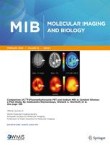|
Σφακιανάκης Αλέξανδρος
ΩτοΡινοΛαρυγγολόγος
Αναπαύσεως 5 Άγιος Νικόλαος
Κρήτη 72100
00302841026182
00306932607174
alsfakia@gmail.com
Αρχειοθήκη ιστολογίου
-
►
2023
(391)
- ► Φεβρουαρίου (200)
- ► Ιανουαρίου (191)
-
►
2022
(2843)
- ► Δεκεμβρίου (161)
- ► Σεπτεμβρίου (219)
- ► Φεβρουαρίου (264)
- ► Ιανουαρίου (280)
-
►
2021
(5625)
- ► Δεκεμβρίου (231)
- ► Σεπτεμβρίου (345)
- ► Φεβρουαρίου (620)
-
▼
2020
(2065)
- ► Δεκεμβρίου (535)
-
▼
Νοεμβρίου
(733)
-
▼
Νοε 11
(33)
- Feasibility of improving patient’s safety with in ...
- EyeDose: An open-source tool for using published M...
- Evidence for interleukin 17 involvement in severe ...
- Non-coding RNA derived from extracellular vesicles...
- Mitochondrial rewiring through mitophagy and mitoc...
- PRMT6 deficiency induces autophagy in hostile micr...
- Modification of diet, exercise and lifestyle (MODE...
- Awake prone positioning of hypoxaemic patients
- Development of a risk prediction model of potentia...
- Development and validity testing of the Adolescent...
- Investigating a new tablet-based telerehabilitatio...
- Discontinuing antidepressant medication after mind...
- Effectiveness of deep electroacupuncture with stro...
- TThe Modification of Diet, Exercise and Lifestyle ...
- Assessing the benefits on quality of life of a mul...
- Current status of radioligand therapy and positron...
- [ASAP] Microenvironment-Triggered Degradable Hydro...
- Flow‐diverting stents in the treatment of peripher...
- Usefulness of updated logistic clinical SYNTAX sco...
- TDP-43 proteinopathies: a new wave of neurodegener...
- Kinetic Modelling and Test–Retest Reproducibility ...
- Aberrant ALOX5 Activation Correlates with HER2 Sta...
- Octreotide Infusion for the Treatment of Congenita...
- Three-Decade Evaluation of Cerebrospinal Fluid Pre...
- Erosion Infiltration in the Management of Molar-In...
- sEMG-Based Neural Network Prediction Model Selecti...
- Establishment and Validation of a Prognostic Risk ...
- The Composition of Gut Microbiota in Patients Bear...
- Use of Argon Plasma Coagulation and Endoscopic Hem...
- The Regenerative Potential of Donkey and Human Mil...
- Biochanin A Mitigates Atherosclerosis by Inhibitin...
- Some Common SNPs of the T-Cell Homeostasis-Related...
- Early Electroacupuncture Extends the rtPA Time Win...
-
▼
Νοε 11
(33)
- ► Σεπτεμβρίου (222)
- ► Φεβρουαρίου (28)
-
►
2019
(9608)
- ► Δεκεμβρίου (19)
- ► Σεπτεμβρίου (54)
- ► Φεβρουαρίου (3791)
- ► Ιανουαρίου (3737)
-
►
2018
(69720)
- ► Δεκεμβρίου (3507)
- ► Σεπτεμβρίου (3851)
- ► Φεβρουαρίου (8116)
- ► Ιανουαρίου (7758)
-
►
2017
(111579)
- ► Δεκεμβρίου (7718)
- ► Σεπτεμβρίου (7549)
- ► Φεβρουαρίου (10753)
- ► Ιανουαρίου (10529)
-
►
2016
(16402)
- ► Δεκεμβρίου (7478)
- ► Φεβρουαρίου (900)
- ► Ιανουαρίου (1250)
! # Ola via Alexandros G.Sfakianakis on Inoreader
Η λίστα ιστολογίων μου
Τετάρτη 11 Νοεμβρίου 2020
Kinetic Modelling and Test–Retest Reproducibility for the Dopamine D 1 R Radioligand [ 11 C]SCH23390 in Healthy and Diseased Mice
Εγγραφή σε:
Σχόλια ανάρτησης (Atom)
Αρχειοθήκη ιστολογίου
-
►
2023
(391)
- ► Φεβρουαρίου (200)
- ► Ιανουαρίου (191)
-
►
2022
(2843)
- ► Δεκεμβρίου (161)
- ► Σεπτεμβρίου (219)
- ► Φεβρουαρίου (264)
- ► Ιανουαρίου (280)
-
►
2021
(5625)
- ► Δεκεμβρίου (231)
- ► Σεπτεμβρίου (345)
- ► Φεβρουαρίου (620)
-
▼
2020
(2065)
- ► Δεκεμβρίου (535)
-
▼
Νοεμβρίου
(733)
-
▼
Νοε 11
(33)
- Feasibility of improving patient’s safety with in ...
- EyeDose: An open-source tool for using published M...
- Evidence for interleukin 17 involvement in severe ...
- Non-coding RNA derived from extracellular vesicles...
- Mitochondrial rewiring through mitophagy and mitoc...
- PRMT6 deficiency induces autophagy in hostile micr...
- Modification of diet, exercise and lifestyle (MODE...
- Awake prone positioning of hypoxaemic patients
- Development of a risk prediction model of potentia...
- Development and validity testing of the Adolescent...
- Investigating a new tablet-based telerehabilitatio...
- Discontinuing antidepressant medication after mind...
- Effectiveness of deep electroacupuncture with stro...
- TThe Modification of Diet, Exercise and Lifestyle ...
- Assessing the benefits on quality of life of a mul...
- Current status of radioligand therapy and positron...
- [ASAP] Microenvironment-Triggered Degradable Hydro...
- Flow‐diverting stents in the treatment of peripher...
- Usefulness of updated logistic clinical SYNTAX sco...
- TDP-43 proteinopathies: a new wave of neurodegener...
- Kinetic Modelling and Test–Retest Reproducibility ...
- Aberrant ALOX5 Activation Correlates with HER2 Sta...
- Octreotide Infusion for the Treatment of Congenita...
- Three-Decade Evaluation of Cerebrospinal Fluid Pre...
- Erosion Infiltration in the Management of Molar-In...
- sEMG-Based Neural Network Prediction Model Selecti...
- Establishment and Validation of a Prognostic Risk ...
- The Composition of Gut Microbiota in Patients Bear...
- Use of Argon Plasma Coagulation and Endoscopic Hem...
- The Regenerative Potential of Donkey and Human Mil...
- Biochanin A Mitigates Atherosclerosis by Inhibitin...
- Some Common SNPs of the T-Cell Homeostasis-Related...
- Early Electroacupuncture Extends the rtPA Time Win...
-
▼
Νοε 11
(33)
- ► Σεπτεμβρίου (222)
- ► Φεβρουαρίου (28)
-
►
2019
(9608)
- ► Δεκεμβρίου (19)
- ► Σεπτεμβρίου (54)
- ► Φεβρουαρίου (3791)
- ► Ιανουαρίου (3737)
-
►
2018
(69720)
- ► Δεκεμβρίου (3507)
- ► Σεπτεμβρίου (3851)
- ► Φεβρουαρίου (8116)
- ► Ιανουαρίου (7758)
-
►
2017
(111579)
- ► Δεκεμβρίου (7718)
- ► Σεπτεμβρίου (7549)
- ► Φεβρουαρίου (10753)
- ► Ιανουαρίου (10529)
-
►
2016
(16402)
- ► Δεκεμβρίου (7478)
- ► Φεβρουαρίου (900)
- ► Ιανουαρίου (1250)



Δεν υπάρχουν σχόλια:
Δημοσίευση σχολίου